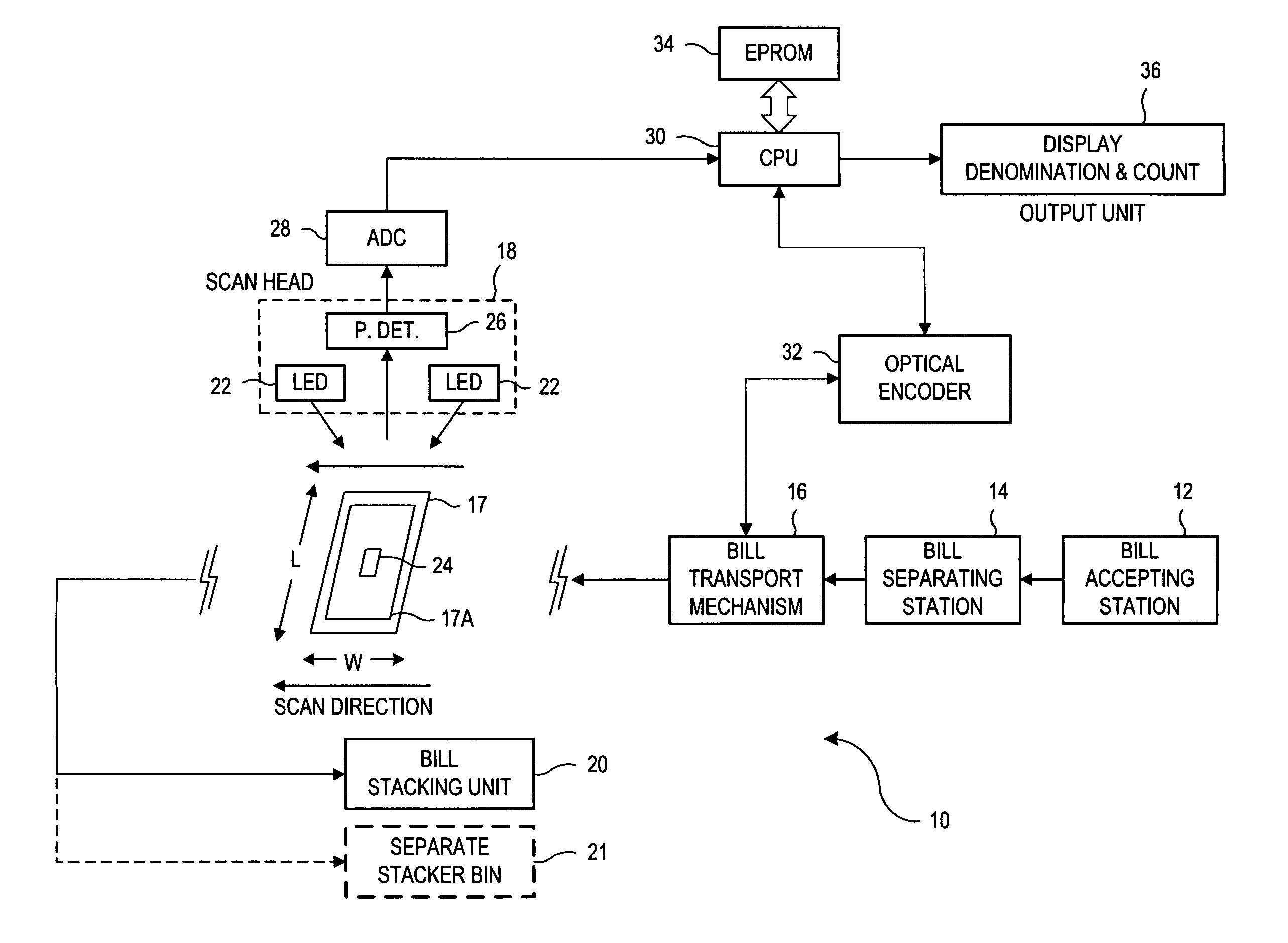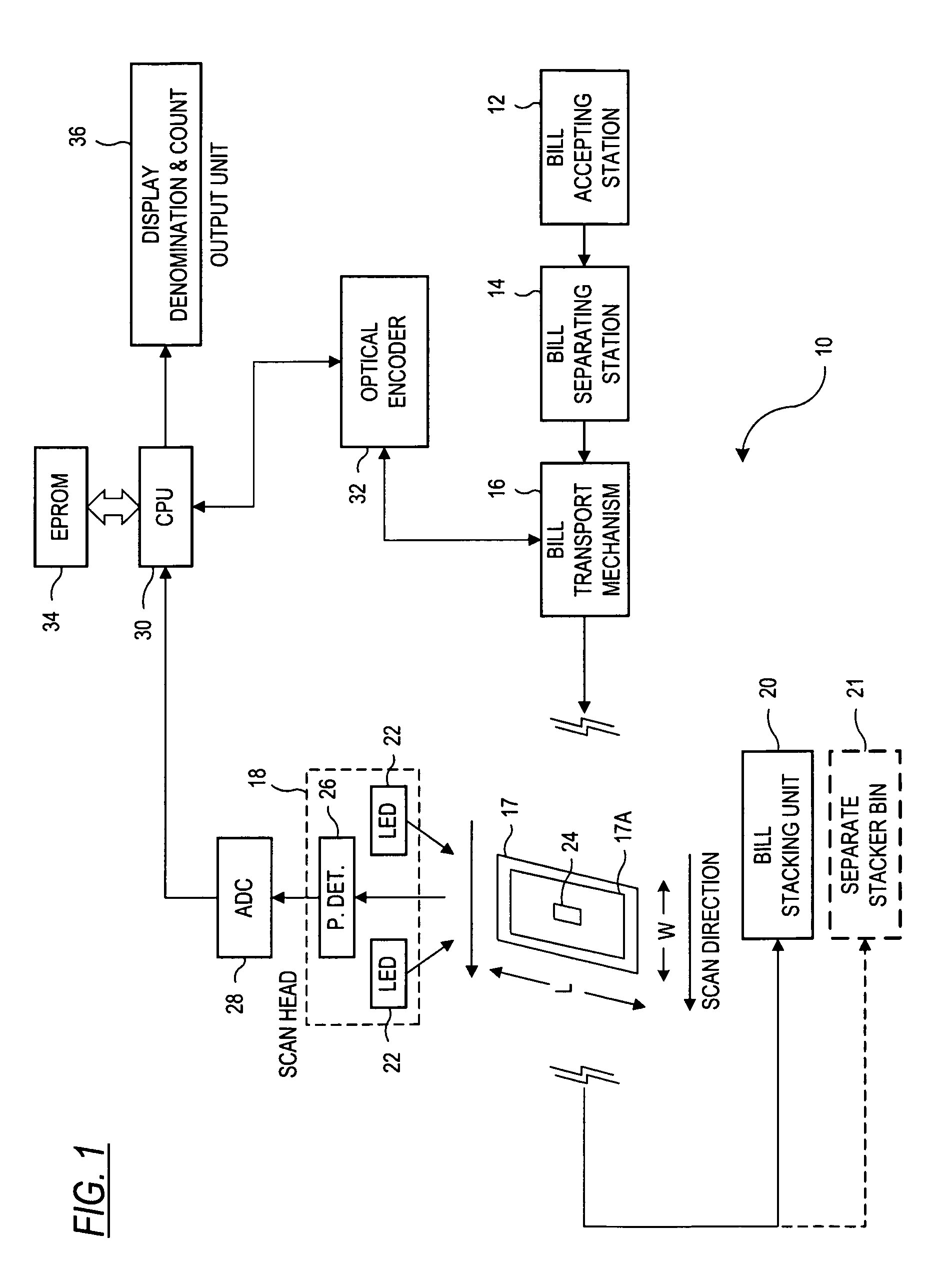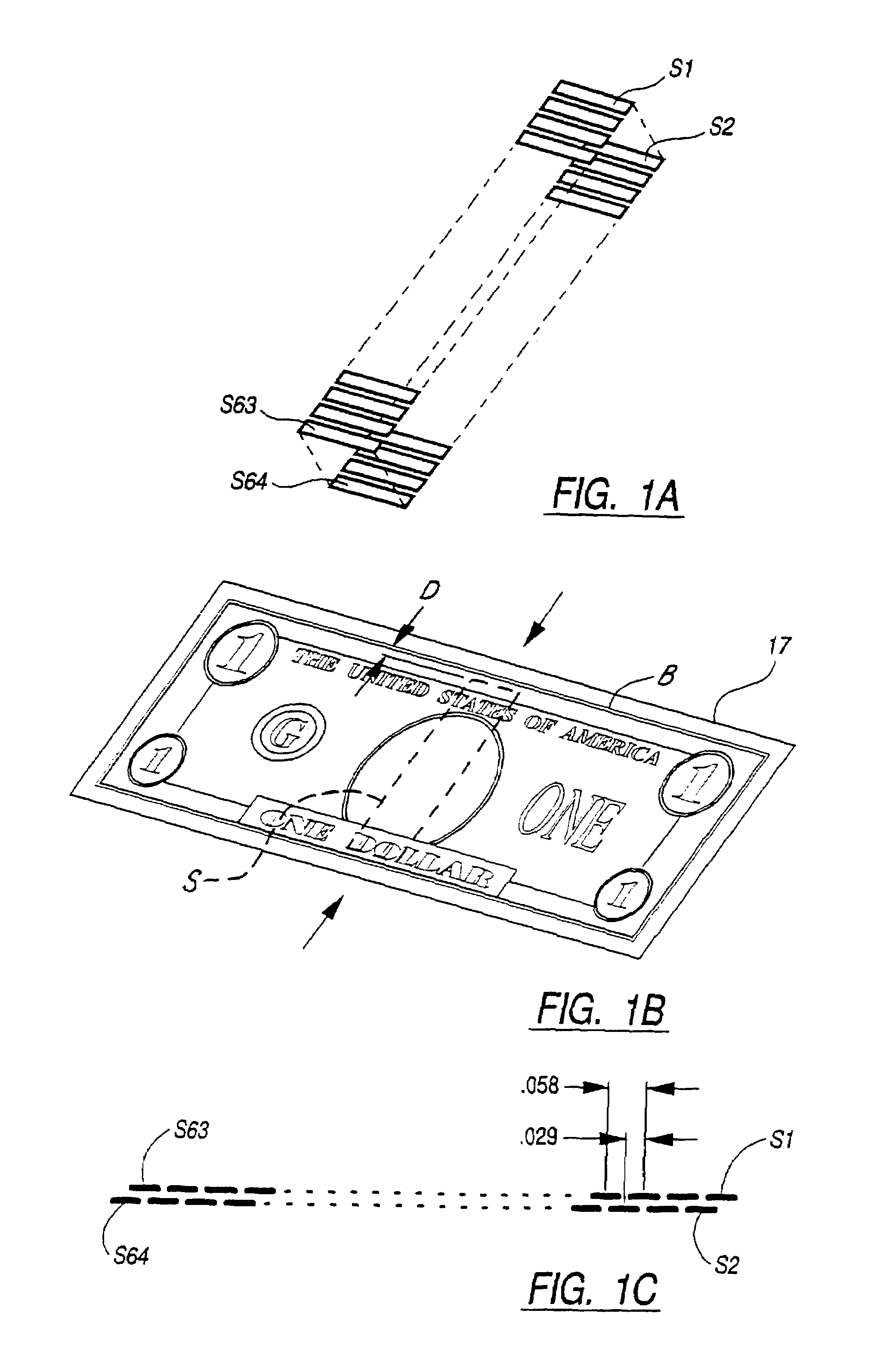Method and apparatus for currency discrimination and counting
a currency and counting technology, applied in the field of currency identification, can solve the problems of requiring a correspondingly longer period of time to process data, slowing down the rate at which incoming bills may be scanned, and insufficient time, so as to achieve efficient discrimination among and count bills, high degree of accuracy, and high speed
- Summary
- Abstract
- Description
- Claims
- Application Information
AI Technical Summary
Benefits of technology
Problems solved by technology
Method used
Image
Examples
Embodiment Construction
[0044]Referring now to FIG. 1, there is shown a functional block diagram illustrating the optical sensing and correlation system according to this invention. The system 10 includes a bill accepting station 12 where stacks of currency bills that need to be identified and counted are positioned. Accepted bills are acted upon by a bill separating station 14 which functions to pick out or separate one bill at a time for being sequentially relayed by a bill transport mechanism 16, according to a precisely predetermined transport path, across an optical scanhead 18 where the currency denomination of the bill is scanned, identified and counted at a rate in excess of 800 bills per minute. The scanned bill is then transported to a bill stacking station 20 where bills so processed are stacked for subsequent removal.
[0045]The optical scanhead 18 comprises at least one light source 22 directing a beam of coherent light downwardly onto the bill transport path so as to illuminate a substantially ...
PUM
| Property | Measurement | Unit |
|---|---|---|
| angles | aaaaa | aaaaa |
| dimension | aaaaa | aaaaa |
| wide dimension | aaaaa | aaaaa |
Abstract
Description
Claims
Application Information
 Login to View More
Login to View More - R&D
- Intellectual Property
- Life Sciences
- Materials
- Tech Scout
- Unparalleled Data Quality
- Higher Quality Content
- 60% Fewer Hallucinations
Browse by: Latest US Patents, China's latest patents, Technical Efficacy Thesaurus, Application Domain, Technology Topic, Popular Technical Reports.
© 2025 PatSnap. All rights reserved.Legal|Privacy policy|Modern Slavery Act Transparency Statement|Sitemap|About US| Contact US: help@patsnap.com



